Before you install a luxury vinyl plank floor in your bathroom, there are a few things you should consider first. Just because it’s waterproof and everywhere, does NOT mean it’s the right choice for every bathroom. Here are some dos and don’ts for installing vinyl plank floors in the bathroom.
Vinyl Plank Floors in the Bathroom
This mistake is so widespread, after I saw it again today in one of our eDesign projects (installed by a previous homeowner) I decided it was an emergency to post this list of Dos and Don’ts:
DO Install vinyl plank floors when it is continuous throughout your new build or renovation without interruption by a different flooring
It should visually look like, “How nice, the same hardwood floors (that’s what a good LVP should look like) simply extend into the bathrooms too” just like this image below:
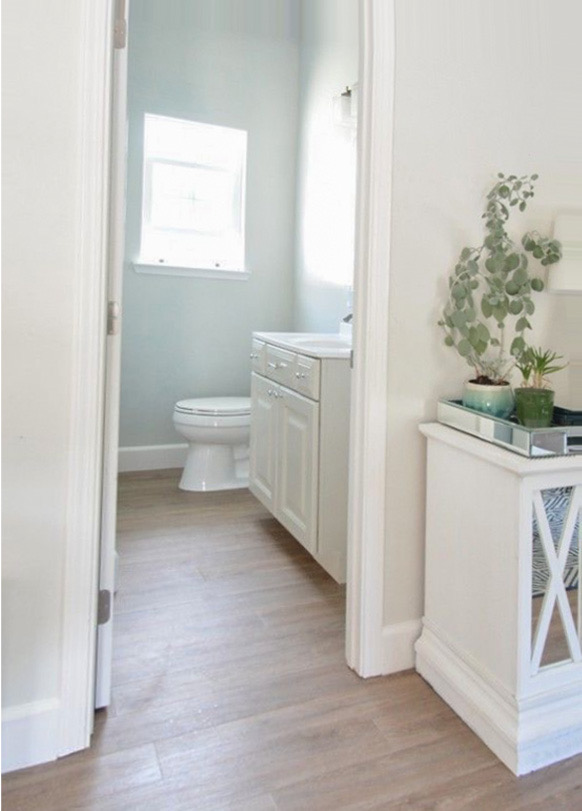
or this:
So I actually only have one DO when it comes to installing vinyl plank floors. And you just read it.
The rest are DON’Ts
In my opinion.
Please note, this is my opinion and it doesn’t mean it’s right. If you don’t agree with me, you can just keep clicking. If you’ve already installed them, and they don’t extend throughout the rest of your home, perhaps it’s best if you keep clicking as well? After all, ignorance is bliss sometimes.
When I did a search to see what everyone was saying, about the world of LVP flooring, it reminded me of the time I searched black windows.
Everyone just talked about how great, inexpensive, durable and waterproof they were. NO ONE told me WHEN they would not be a good choice, design-wise.
This quote made me cringe:
The DIY crowd will benefit the most from LVT and LVP floor coverings. The ease of installation and the low cost rank pretty high for those wanting to install it themselves. Most people want the look of real wood or stone, without the hassle that comes along with it, and they don’t want to empty too much of their wallets to get it.
Upgrading to vinyl is a cheap investment in your home and will look nearly identical to stone or wood. The next time you update your bathroom, consider using floating LVP or LVT to quickly transform that room into a modern space for you and your family.
Why? Because it’s often the DIY crowd that gets seduced by a good sale on some taupe or grey LVP that does nothing to improve the look of the older, dated bathroom.
Okay now onto the don’ts, since there are so many.
DON’T install vinyl plank flooring into an old bathroom like this
It screams NEW floors, OLD bathroom.
If you are renovating a bathroom and not replacing everything, that’s when you need to keep reading this mantra over and over again:
To avoid the “yesterday and today” look, your bathroom should look like everything was installed at the SAME TIME.
If the homeowner had chosen sheet vinyl flooring in a white hex pattern, for example, that would have been way better. It would simply have looked like an updated 70s bathroom, NOT a badly updated 70s bathroom.
DON’T install vinyl plank flooring if it connects to carpet
I was recently in a new build. The builder had installed a nice classic LVP downstairs and carpet upstairs. All the upstairs bathrooms had the same LVP as the rest of the house. But they were now installed right beside the carpeted hallways and bedrooms.
If you have carpet upstairs, and you want vinyl flooring that’s fine. But now you should be choosing vinyl flooring that looks like tile (LVT) and NOT the look of hardwood planks.
Because a wood floor looks best, as I said, when it runs throughout a continuous space and the small rooms and bathrooms that run off the main space. In a bathroom abutted to a pile carpet, it just starts to look odd. Because unless you have the flow integrity of a continuous wood floor, tile is simply a more classic look for bathrooms.
In my mind, the goal with flooring should always be to minimize the transitions from one flooring to another. And actually, that is what LVP is great for, a single flooring that you can run EVERYWHERE.
But what happens too often in a DIY renovation is that we are renovating one room, one bathroom, just the kitchen, only the mudroom, etc. and the new LVP goes only in there, butting up to some other older flooring.
And that is never ever a good look.
Don’t install LVP flooring connected directly to other wood or wood look floors
Especially don’t consider wood look LVP for your bathroom (or bedroom, or laundry room, what have you) if it will connect directly to your existing hardwood or wood look floors. It’s highly unlikely you will ever find a close enough match for this to work well. It will just look bad. Sorry.
If you’re tempted to do this, consider whether you can tackle floating LVP over ALL the flooring for a current, unified look instead. If not? Choose a timeless and classic tile for your bathroom, or kitchen, or foyer.
Some pretty floors to consider instead of LVP
A large scale marble look tile like this one
Not into a white floor? A charcoal herringbone or hex is a pretty choice.
There are lots of other pretty options too, terracotta/saltillo in the right house, a pattern with colour is fun.
Since so many of you were confused by this last statement:
Wood look floors in the bathroom is a specifically rustic farmhouse look though that doesn’t work in most homes, and certainly not if it’s not continuous with the flooring in the adjoining spaces.
What I’m saying is that the world of LVP wood look flooring is ALL the relatively rustic, wide plank look that is ubiquitous in the Farmhouse trend. And that look is not right for every house. We are so deep in the farmhouse trend that we can’t even see the edges of it. More traditional homes that have no business with rustic floors have them anyway because that is the only choice available, (as opposed to more traditional looking wood floors, with slimmer planks, stained and varnished, smoother and more formal).
And if your house is more traditional in style, especially if you have more traditional hardwood flooring in other areas of the house, a wide plank LVP wood look floor, is not perfect.
So I always advise my clients to look for the smoothest, quietest and most versatile looking options in LVP, without lots of rustic burnishing and detail. For longevity. Because we will see the other side of this tend soon.
It’s important to be aware of the trends when you’re doing any kind of expensive renovation, like a bathroom. Rustic wide plank wood floors in a bathroom is technically a more rustic farmhouse look. And that’s fine if the same floor connects the bathroom to the rest of the house directly, but if you are flooring a bathroom that is not continuous with your wood floors, or a in more traditional home where more formal wood floors exist in the hall, it’s worth considering a tile that will look like it has been there forever and is completely timeless.
Related posts:
Are Hardwood Floors Considered a Pattern?

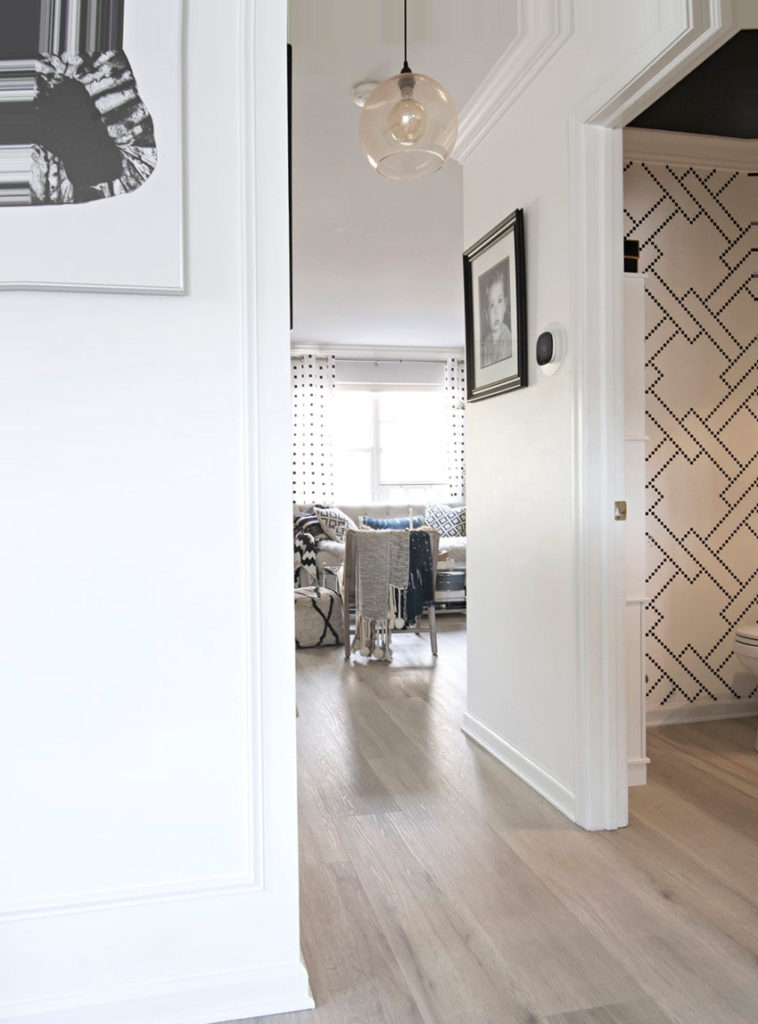
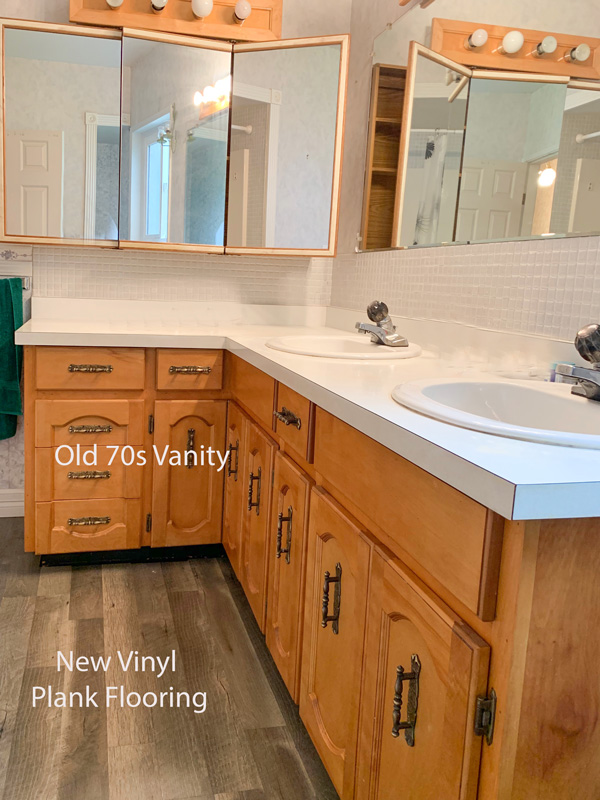
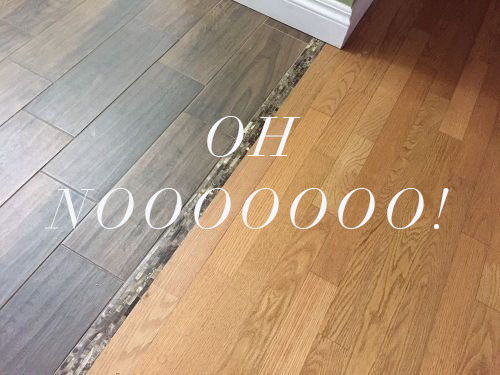

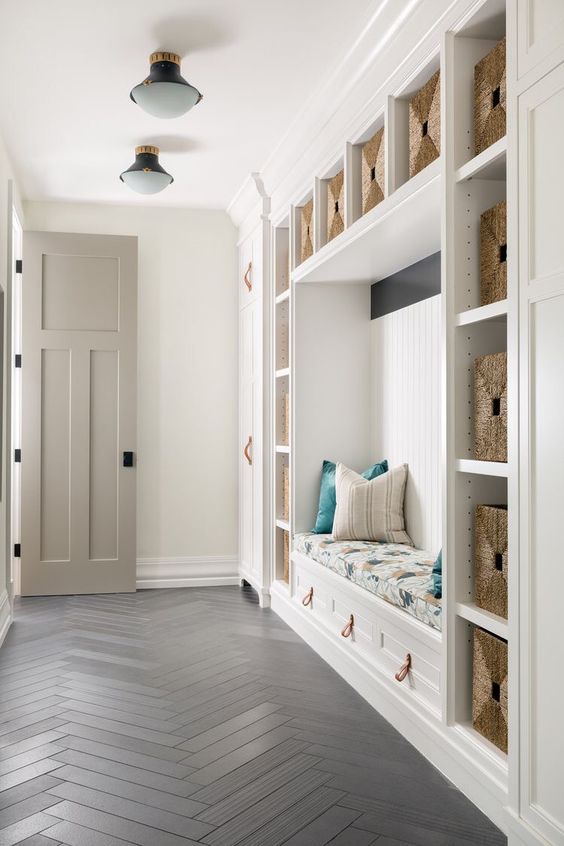




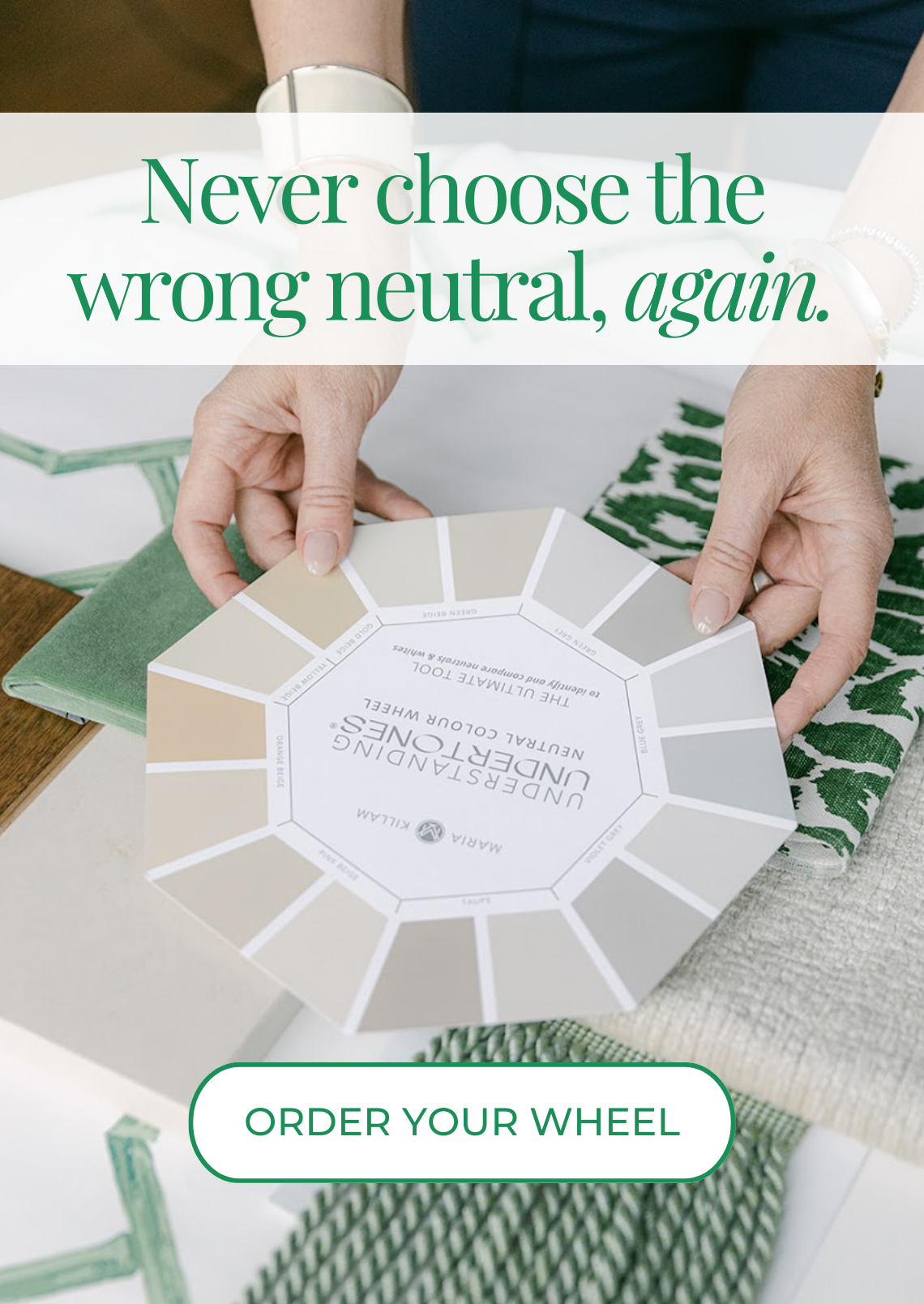
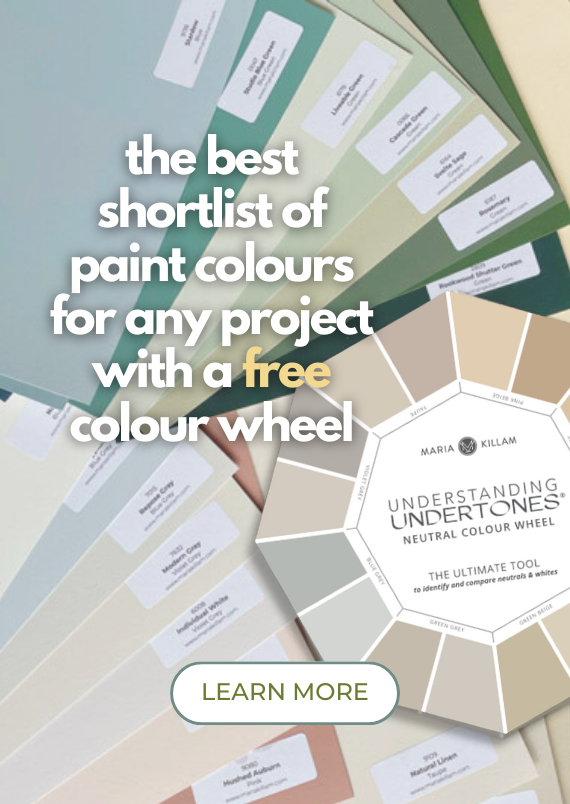

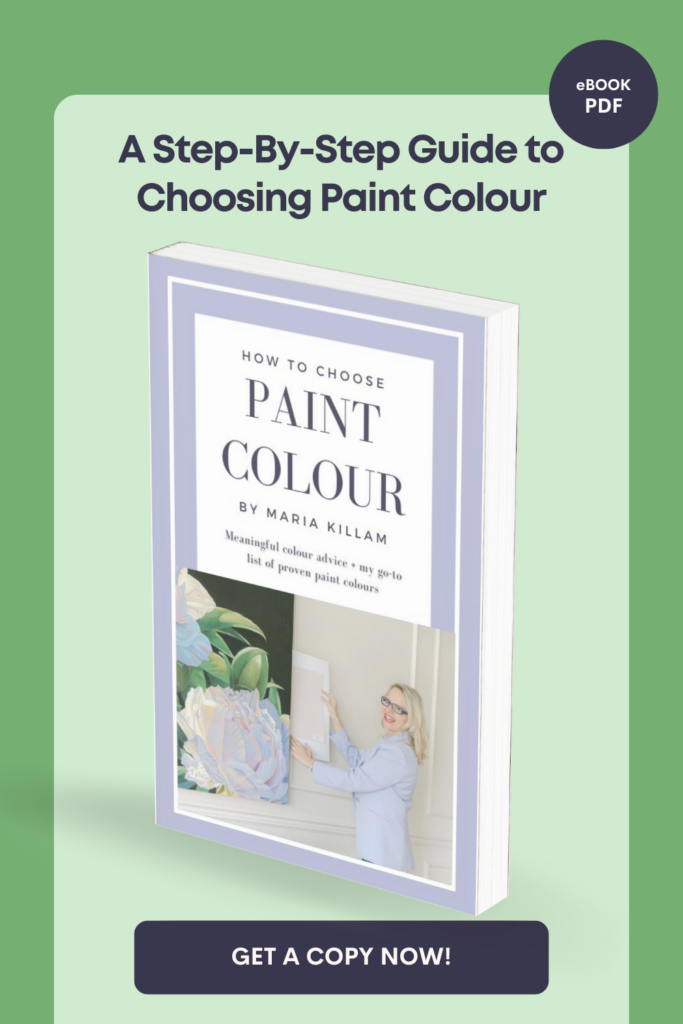


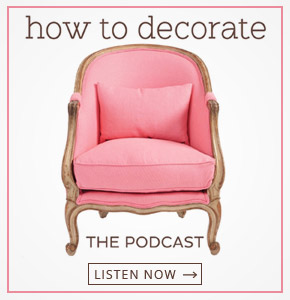




I couldn’t agree with you more! We recently built in an open concept home with a subdivision builder. The standard plans called for a view from the front door to the back as follows: tile – carpet – tile – carpet with tile in the bathroom and laundry room off the hall. My thoughts immediately went to the years of reading your blog and following your advice. I don’t think the “designer” understood when I cringed and said I wanted the same flooring throughout the entire house (except our ensuiye which I did in a large marble). We went with LVF and I love it!! Living in a construction zone is dirty, I track stones in every time the door opens…having the LVF has saved a lot of damage to hardwood or carpet. One connisbthat it can seem cold and hollow, so I’m making sure to invest in area rugs to warm things up in the living room and bedrooms.
I did while home LVP in our new build and I love it. No transitions with the matching flooring is a sleek look.
It’s a light to medium tone with no grey undertone, was hard to find in my local store!! So much grey.
Wait, so you’re telling me if I’m not going with a rustic farmhouse look, stick to LVT or tile and don’t run vinyl plank floors in my bathrooms? Please, Maria, Say it ain’t so! We are running LVP thoroughout the top level of our raised ranch home without interruption. I don’t understand, I thought if you run wood floors throughout, it isclassic and timeless. Never considered anything else. The first two pics you showed as examples look perfectly timeless and classic to me and don’t appear to have the rustic farmhouse look. Can you clarify? I’m sick over this.
Hi Holly, from what I read, Maria wasn’t saying you shouldn’t have wood looking LVP ever in bathrooms, just that you shouldn’t have wood-like LVP in a bathroom if it’s not running continuously outside the bathroom as well. It sounds like what you’re doing will work great!
I agree with Ashlee! That’s exactly how I read it too.
Thanks, Kendal! I was about ready to lose it for a moment there. I don’t think I can take much more of the renovating process! I mean there is still time to install a luxury vinyl tile look (I HATE cleaning the grought lines in ceramic tile- ain’t nobody got time for that!), but I’m assuming I would be hard pressed to find a classic and timess luxury vinyl tile. I rather love the flow of continuous wood (or wood look) flooring, and I assumed wood look floors throughout the house, including bathrooms and foyers, can be classic and timeless with the right finish. Freaked when I read (and misinterpreted?) Maria’s farmhouse look comment at the end.
Also if Ashlee, Kendall and myself are misinterpreting what Maria said and it is NOT classic and timeless to run wood (or wood look) flooring continouosly throught your home (including foyers and bathrooms) PLEASE clarify! Are we in Mercury Retrograde or something? Haha!
Ashlee, I think you just saved me from a near nervous breakdown! I was hoping someone would reply, if not Maria, to clarify. I never thought wood floors throughout the house, if done right, was trendy or “rustic farmhouse” design. I was hoping I was just overreacting when I read her post. Renovating and all the choices that come with it is daunting and if I wouldn’t have stumbled onto Maria’s blog while researching, I wonder what bad choices I would’ve made. We’re renovating our entire house and after ordering cabinets from a big box store to save money we got a bunch of shoddy, damaged cabinets and it will be a total of about 6 months without a kitchen before everything is finally installed. I think it’s affecting my ability to comprehend. Thank you!
Ashlee, until the last paragraph I also thought, like you, that Maria was just saying that LVP should run continuously if you use it in a bathroom. But here’s what Maria wrote at the very end of the article…
“Wood look floors in the bathroom is a specifically rustic farmhouse look though that doesn’t work in most homes, and certainly not if it’s not continuous with the flooring in the adjoining spaces.”
I read this the way Holly did and it confused me too, especially since the first two photos definitely aren’t a farmhouse look. It seems like a statement that would be the lead sentence for a whole different blog post on when to use wood look flooring in a bathroom.
Maria, please help us!!
Liz, Oh no! What is going on here? So confused! Dang it! I’m so frustrated I could cry. Maria! Emergency!!! What say you, classic and timeless if installed throughout,or rustic farmhouse in bathrooms (which would me trendy) period. This post has got me so confused I don’t know which end is up!
Holly, from your description, you are doing exactly what is in the very first photo at the top of this post, which is what Maria APPROVES. DON’T WORRY, IT WILL LOOK GREAT.
This is “rustic” LVT. It doesn’t sound like that is what you have selected: https://www.boltoncarpetservices.co.uk/wp-content/uploads/2020/10/lvt-flooring-fitters_bolton-6.jpg
So well said and I agree 100%! I have so many clients that want to try and match LVT to their existing hardwood floors and it’s one thing I won’t budge on. It’s an amazing product when used correctly from a design perspective.
There is LVP that doesn’t mimic the wood design too! It is hard to find but it is out there. I recently recommended one that looks like a dark slate with some lighter veining. It looked fantastic once installed, like large tiles, without the expense and mess of a tile installation. Also, another benefit of these non-wood-looking ones is that you can cut them down- cut the popular 12×24 size down to 12x12s and it looks even more like tile. It also works to cut it the long way, if you want to do a herringbone pattern. Beware though, it is a lot of cutting, so best for a smaller space. LVP really is an excellent, versatile product.
Hello, what company has slate looking LVP? I’m doing my bathroom floor and don’t want anything that looks like wood.
Another mistake I see is installing LVP in a consistent running bond pattern vs. a random offset that more mimics wood flooring. When installed all the joints line up and it makes the printed wood pattern more obvious and fake looking.
I completely agree, Mike. The random pattern of hardwood needs to be duplicated in vinyl tile, if you want a natural look.
BTW, Maria’s points seem spot on, except that I would never put slick, hard, cold marble on any floor. It’s slippery when wet and is an accident waiting to happen. Adding a throw rug would only make things worse.
Thank you for saying this! The “slick, hard, cold” large polished tiles on the bathroom floor in our rental actually make me anxious. They are slippery even when dry. If I didn’t use a walker for my bad back anyway, I certainly would in that bathroom! The thought of falling on it horrifies me. It’s a broken hip and a subdural hematoma waiting to happen. And falls can occur at any age, not just in your 70’s like I am. 🙂
Couldn’t agree more Mike! It is so critical to have a good installer with an eye for good design as well.
Hi Mike. Do you have a method to your madness? Lol! Meaning, is there a way to have a consistent random offset or do you randomly pick boards throughout the process? I will be having someone install them and I’d like to know how to describe this to him. Thanks!
I’m having a house built .
As I was walking through some that were finished.
I noticed LVP great room kitchen dining
Carpet bedrooms
Then LVP bathroom carpet closets
I knew right away I didn’t want that look
It just looked chopped up
And didn’t flow .
I said I want the LVP through out the whole house no breaks .
Mine as far as I know will be the first like this in that area .
At first they kept saying oh you don’t want carpets in bedroom and closets ?
I kept thinking after we ordered did I do the right thing ?
Running the LVP through the whole house?
Thank you Maria for this blog perfect timing .
And mine just happens to be one of the farm houses .
Yay for you and going with what you want! I agree, no choppy floors! And who needs carpet in bedrooms? Slippers and a fancy rug work just fine and are easier to replace 🙂
We JUST did this as well. Two story house and we had lvp run throughout the whole thing.
If clients would only listen to this! I’ve been saying it for years. And not just with LVP, but with ceramic or porcelain wood look tiles, too. Thank you! Flow is so important, and flooring is an area where it can make or wreck it.
Love this article. Curious, if your bathroom is perpendicular to your hall, how do you lay out the LVP in the bathroom? Same as hall? Or perpendicular?
Thanks, Rachel
I don’t think LVP in bathrooms is a good idea ever. My installer, when I did LVP in my upstairs throughout, balked at the bathrooms. He said the plank itself is waterproof, but it still has seams,so water intrusion is a possibility. I actually did a sheet vinyl that looks like hex tile, but I also completely renovated the bathroom. I have no problem with bathrooms having a different flooring if it looks like a different material or actually is a different material. For example, don’t do wood look tile in the bathroom next to real wood floors in a bedroom–that’s bad. Also consider if you normally leave that door open–if you do, then the look should coordinate, but I close my closet doors and bathroom doors, so it doesn’t matter what flooring I have in there. Basically, my take on all of this is make sure your look is cohesive. If you have old cabinets and put in LVP, you probably need to paint those cabinets to bring the whole look forward. In the picture above, I would replace the doors on the cabinets because that’s a very dated cabinet door style or just replace the cabinets with stock cabinets, and wow, the lighting fixtures! So much is wrong and the flooring update makes it all worse. Honestly, like Maria said, a sheet vinyl in a cute hex pattern or even a solid would be better than the vinyl plank.
Are you talking specifically of LVP (planks, that look like wood?)
I have actual white oak throughout, including my powder room, and tile in the rest of the bathrooms. But I’ve chosen a dark gray large format LVT for the mudroom/laundry room because of its softness underfoot and lack of grout.
BTW I’ve been looking for good looking patterned vinyl but all the good patterns were products from the UK. Anyone know who sells it in the US?
Excellent information. When we were replacing the twenty year old carpet in our master bathroom with tile, the tile store tried to talk me into wood look tile because it is so popular. I said no, Maria says that would be old bathroom, new tile. So we put in simple white 12 x 12 tile which matched the size available 20 years ago. I painted the walls Pale Oak to minimize the pink beige in the old tile on the tub and in the shower, also based on Maria’s ideas for updating pink beige. With updated lighting, plumbing fixtures, and shower door it all works beautifully at minimal cost and mess. We also renovated another bathroom which abuts real wood floors and we avoided wood look tile or flooring there as well. Thanks, Maria! Your advice has been sooo helpful!
Thank you Maria! I was just wondering how soon good advice would come related to this topic with so many of my friends and acquaintances ditching their current flooring for this type. You give sound do’s and don’ts I can use if asked my opinion – which I usually start with “well according to Maria Killam, the go-to for good advice…..”
What do I do if my bedroom is hardwood which leads to a tiled bathroom and then enters a closet with carpet. The carpet needs to be replaced. The person who did my hardwoods doesn’t want to put hardwoods on the closet since a lot of work would be involved for a small space. Do I just replace with carpet? No other space in the downstairs has carpet.
I agree with needing a good installer for wood plank LVT. Too many new homes in my area have the joints in line which screams fake wood.
Given the multitude of houses online with bad LVP, everyone should read this post! Because we want to move to a different state, I look at a lot of houses. I can’t tell you how many boast of renovations that include gray LVP adjoining different flooring. I look at an otherwise nice house and scream internally, because they have ruined it. Who wants to pay extra for a renovated house only to rip out the horrid floors and install something decent? I’m sorry to sound harsh, but don’t people have eyes?
I get that LVP is very durable, but so was the pre-renovation brown linoleum on our kitchen floor. Fifty years old and looked like new. Boy, did I hate it. Give me worn hardwood floors any day.
Just had an appointment yesterday afternoon where the house was fully renovated and new, but she’s going to tear out the brand new vanities and tops because they have no storage even though they are current. It pains me to redo the shower that looks nice but doesn’t drain or dry out after not using for two weeks. Ugh the mold potential if that in a beach area. But on the plus side, the same driftwoody flooring is all the way throughout.
Maria, thank you for addressing my “farmhouse freakout”. When I purchased your ebooks and read through them, there’s a section where you say people tell you they don’t fall victim to trends, but you said anything you buy in current time is basically a trend (or something along those lines). I immediately understood that dealing with my country house in the adirondacks with wood stained windows, doors, everything, etc… It was difficult trying to find anything warm toned to match with the gray trend and nbow the black and white trend.
As I mentioned, we’re renovating the entire top level of our raised ranch home and we’re installing LVP floors throughout, including the bathrooms. We bought 7″ wide x 48″ long LVP flooring because, like you said, there isn’t much out there unless you’re going with solid wood thin plank “classic” floors. I also believed that since they are medium brown with no gray throughout, they were classic and timeless. We invested in a trend and again I had NO idea we were doing it! I figued wide plank floors are the new normal. Regardless of how long they will be in style, we’re looking at the next 20-25 years of them in our house (or until we’re dead lol!) so I’d better get used to it. I cannot stand wall-to-wall carpeting- got rid of them 21 years ago because of the allergens and dirt they harbor and never looked back.
To me, achieving classic and timeless is harder than it would seem unless you have a disposable income, which clearly if I’m going with LVP flooring, do not. In the end, I’m doing the best I can to achieve classic and timeless for the most part and I’m still loving all your blog posts and eat them up like dark chocolate and cabernet. I bought samples, painted the posterboard as you suggested in your ebooks, carried them around as poser interior decorator in each room of my house, compared them to my fixed elements (well, samples of them anyway) and drove my family nuts in the process -my husbands words. Haha!
Regarding the LVP flooring… I am choosing to be blissfully unaware in the New York Adirondacks.
I hope Maria weighs in on the discussion above! I have a somewhat similar dilemma. The 1st floor of my home is all beautiful hardwood. The stairs are builder grade “utility stairs” hidden by carpet. 3 contractors have told me they cannot be switched to hardwood, or even pine with white risers without LOTS of $. They all suggested I stick with carpet. Ugh. That carpet continues for the upstairs hall, but each of the 3 bedroom has a different carpet–both color and texture!!! The 2 baths have white ceramic tile, but it’s old; some are cracked and chunks of grout are missing. I have no idea what to put down. I have been told that as long as I keep carpet on the stairs and hall (again, ugh!), I can go with plank vinyl in the bedrooms & bath, but I don’t think that goes with my colonial home. I can’t afford to put real hardwood upstairs to match the 1st floor, and even if I could, there’s the problem of the stairs. Did I mention that I hate carpet?
Thank goodness my hubs and I specified LVP throughout the main floor; the only break is in the master bathroom, and that flooring transition will be interesting once it’s complete. We did this for practical purposes because of our dog’s ability to track in dirt – red dirt – and debris. She also dribbles water a considerable distance from her bowl. The downside to the LVP is that it’s a washed oak appearance. The builder selected it, and changing the color wasn’t an option. To be honest it’s probably the best-looking LVP finish that met the builder’s specs and price point. It’s not gray enough to coordinate well with gray stains or paints, but it’s not warm enough to coordinate with natural (unstained) woods such as oak or maple. It’s kind of like the color you see in weathered wood that hasn’t gone gray but has rather bleached and retained traces of brown. To feel purposeful and designed it needs a mid to dark stain color that doesn’t veer too red or too orange. It is limiting. 🙁
Hello Ladies,
I found this page while investigating LVP for our farmhouse renovation. Yes, a real farm house located on a real farm, way out in the country. I could relate to the tone of a few comments here where panic was setting in because they thought that they just learned that they did everything wrong. I personally hate it when I learn that something I have practiced successfully for 20 years is the wrong way!
Relax! Just like there are many dozens of religions that all claim to be the only “right” way, there are many dozens of ways to decorate that are also “correct”. Maria’s opinion is an excellent one, but not the only one. One has to consider the context. She’s a seasoned designer that I imagine works on upscale suburban and city homes. Her flooring idea is sound, but it doesn’t mean it is the only religion. She even reminds us at the beginning that this is HER opinion and people are welcome to accept or reject it. Don’t panic!
I like the idea of having the main portion of our house (the kitchen, dining area, and hallway) to have a uniform floor and walls cohesion tied together from (this) area to area. From this main area, I like the adjoining rooms to be different, both floors and walls. I want carpeting in the bedrooms. I want a one piece glued down floor in the bathrooms (water abuse), I don’t mind these rooms that are attached to, but radiating around the “main” living area being their own identity regarding flooring, wall color, etc.. Again, this is a functional, working farm home (kids, animals,food preserving), not a city or suburban dwelling that is attempting to be some kind of style presentation.
Kudos and full respect to Maria, but she is not the only decorating goddess. Don’t be afraid to think for yourself.
I just had to comment on this based on the difficulty I am having finding flooring for a main bathroom renovation. Based on what is available it’s understandable why some homeowners have installed luxury vinyl flooring adjacent to real hardwood. We have hardwood in the bedrooms and want vinyl -sheet or luxury- in the bathroom. The aim is to make sure the bathroom is safe for us as we get older. Tile floors are the most dangerous floors to install for elderly people. But the sheet vinyl options available these days are dreadful and very limited and almost all luxury vinyl is wood look. I’ve only found marble look luxury vinyl tiles, one black and white encaustic tile option and a few that look like something you would find in an institution. For some reason the manufacturers are not producing luxury vinyl tiles that look like tile! With these kinds of limited options, what would interior designers or decorators suggest for flooring in such a situation?
We are putting in LVP for Christmas in our daughter’s families house. Total of 5 people and one very active dog. The question I have is if the entire downstairs is going to be LVP including a powder room, will taking the LVP up the stairway look funny…they really want the LVP up the stairs and in the adjoining hall way due to wear and tear. From reading this It sounds like the best look is to run the LVP throughout every room upstairs including bedrooms, baths too?? I am somewhat leery of putting LVP in bathrooms with 3 boys. If we do the LVP on stairs and then carpet everything else, hall and bedrooms and leave the large ceramic in the bathrooms is this going to be a cohesive look? The 3rd option is run the LVP everywhere except the upstairs bathrooms which are a creamy color with beige grout and would blend nicely with the LVP. Help! I might just pay for a consult even though it’s just a question. I would love not being on a tight budget, currently we have a place to get the LVP that is contractors only and most of the options are the wide planks.
I see nothing wrong with different flooring in bathrooms as has been status quo forever. I know lots of people run LVP in bathrooms now, but it looks odd to me. If your going for a wood look, why in bathrooms where you’d never have a wood floor? LVP itself is waterproof, but not the 1/4 in gap around the entire perimeter. What is that going to look like in 20 years? I can tell you, not pretty!
We’re doing LVP in every room, but heated tile floors in bathrooms.
Living in a condo where you have to have carpet in livingroom and bedrooms. LVT is being installed in bathrooms, kitchen, hallway and dining right now. New grey carpet to adjoin. I don’t think tile or would would look any better next to the carpet.
Please help! This article really messed me up! We are about to pull the trigger on remodeling our floors upstairs. Downstairs, we already did LVP wood look throughout. Upstairs we like carpet in the bedrooms, hallways and stairs. We are always barefoot and we like how quiet it is.
The problem is we LOVE the look of porcelain wood look tile floors in the bathrooms! Three bathrooms would be connected to carpet. Will it really look that strange?? We starting looking for tile at first but just could not find anything that we liked. We hate greys, whites, tan stone, and marble. Nothing beats the warmth of wood colors.
We are drawn to pictures of bathrooms with wood floors. We definitely want carpet in the bedrooms. Two bedrooms have bathrooms inside them and one bathroom is connected to a hallway. If I do the hallway in wood it would have to go on the stairs as well and would not match the connecting floors downstairs. Which is also a no no!
Why is it okay to transition from carpet to wood from bedroom to hallway, but not from bedroom to bathroom? Wood in bathrooms is a very popular look. What difference does it make if it transitions to wood or tile specifically for bathrooms? A lot of people still want carpet in the bedrooms, but limited to only tile in the bathroom? LOL
Help! I need to know once and for all if it is ok to have warm tones in the kitchen, dining and living room, and then also have cooler colors in the bathrooms and laundry room! I have been told conflicting opinions and I am certainly not an expert!
This post had me terrified of installing LVP in my kitchen that backed up to my dining room with real wood. I went back and forth for months trying to find other affordable flooring materials for my kitchen. Ultimately I decided to take the risk with LVP and I’m so glad I did. It does not look bad AT ALL, yes there’s a transition but none of it screams fake/real wood at you. It just looks like a different floor which makes perfect sense as it is in a different room of the house. Don’t let this post scare you!